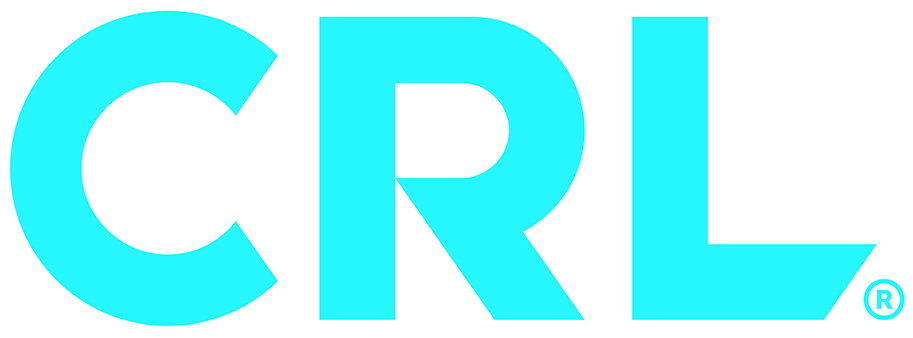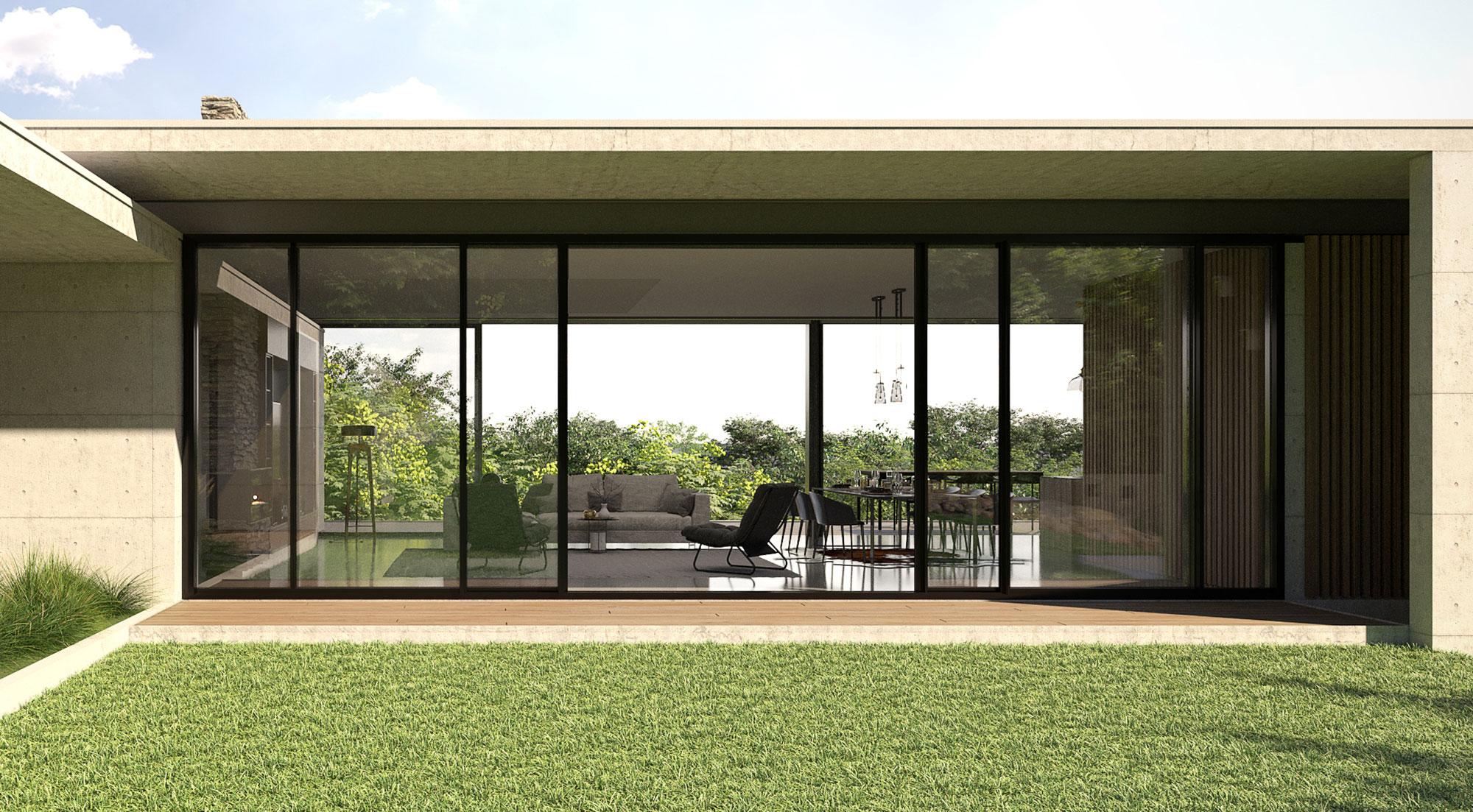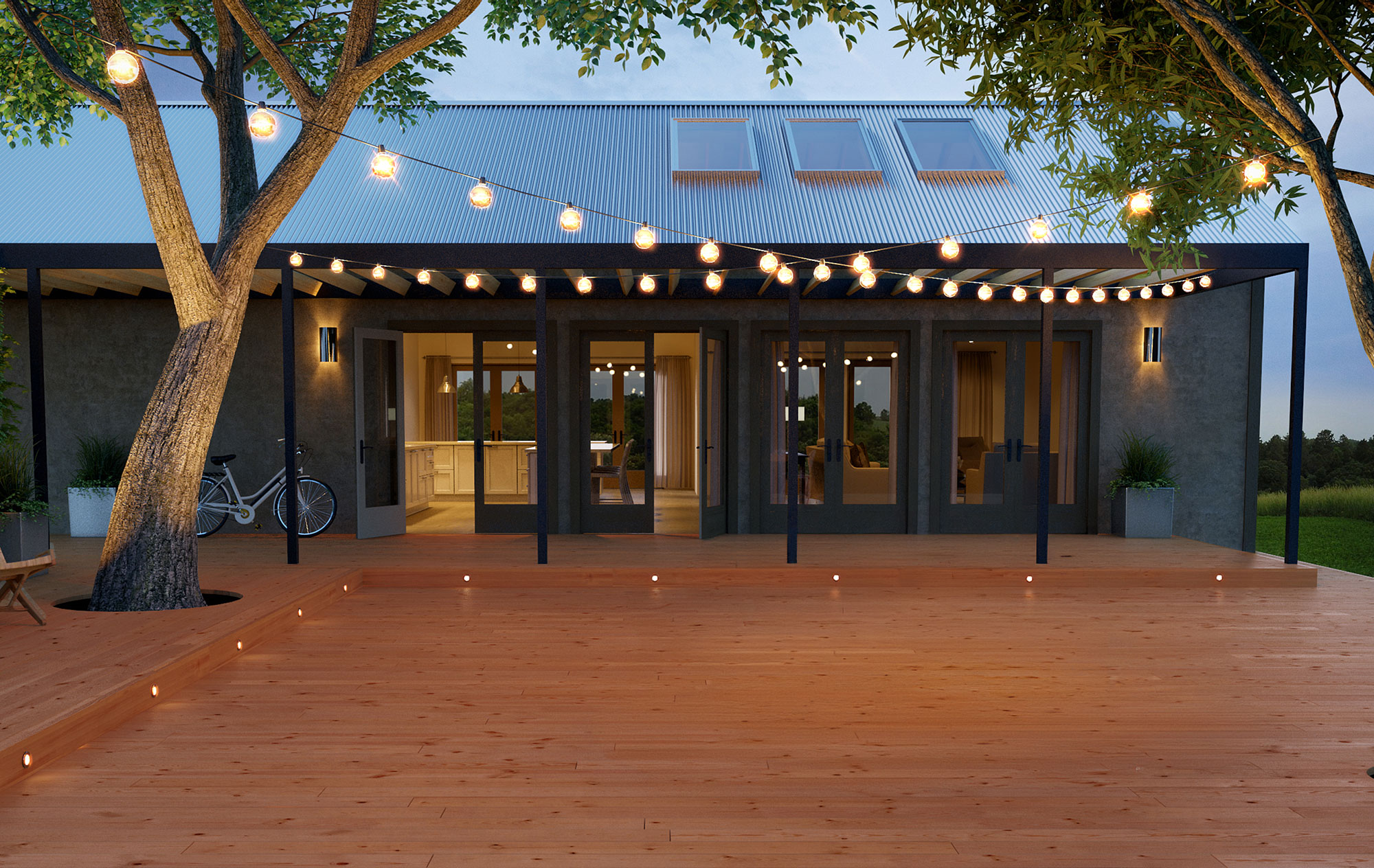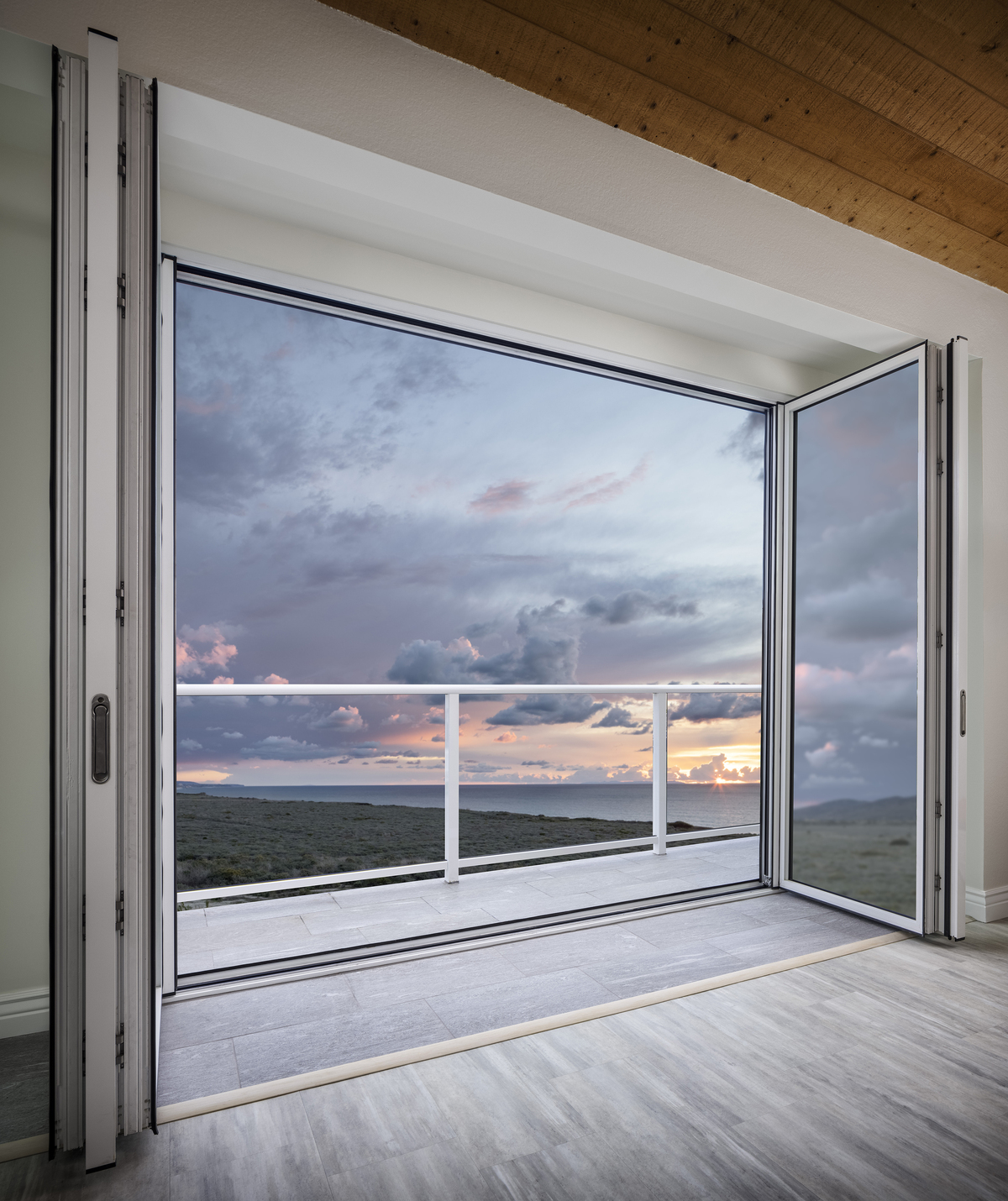
Photo courtesy CRL
Fashioning homes with high-performance materials provides the high-value proposition needed to engage today’s buyer.
A Port in the Storm
It is no secret that the construction market is currently an uncertain place to be for the design professional, residential builder, and prospective homebuyer alike. The National Association of Home Builders (NAHB) /Wells Fargo Housing Market Index (HMI) was designed to provide a measure of health for the single-family housing market. In June 2024, builder confidence in the market for new single-family homes was 43 out of a possible 100, down two points from the May 20241 survey.
Likewise in June, the Fannie Mae Home Purchase Sentiment Index (HPSI) indicated that only nineteen percent of consumers felt that now is a good time to buy a home, up from 14% in May, which represented a new survey low.2 According to recent surveys conducted by NAHB and the U.S. Census Bureau, there is also a distinct discrepancy between the prices of homes being built, and the prices home buyers expect to pay. While 38% of buyers expect to pay less than $250,000 for their next home, only 5% of homes that started construction in 2023 are priced under $250,000.3
Nevertheless, the desirability of new homes continues to grow. Faced with the alternative of choosing between an existing home and a newly built home, 61% of home buyers surveyed in “What Home Buyers Really Want, 2024 Edition,” by NAHB, signified that a new home is their first preference. That marks the highest share of buyers leaning toward a new home since 2007 when 63% of buyers preferred new construction.4 To compare, in 2018, 54% of buyers preferred a new home. A single-family detached home remains the first purchase option for two of every three buyers (66%) surveyed. Far smaller numbers are looking to buy a townhome (16%), a multifamily home (10%), or a manufactured home (5%).5
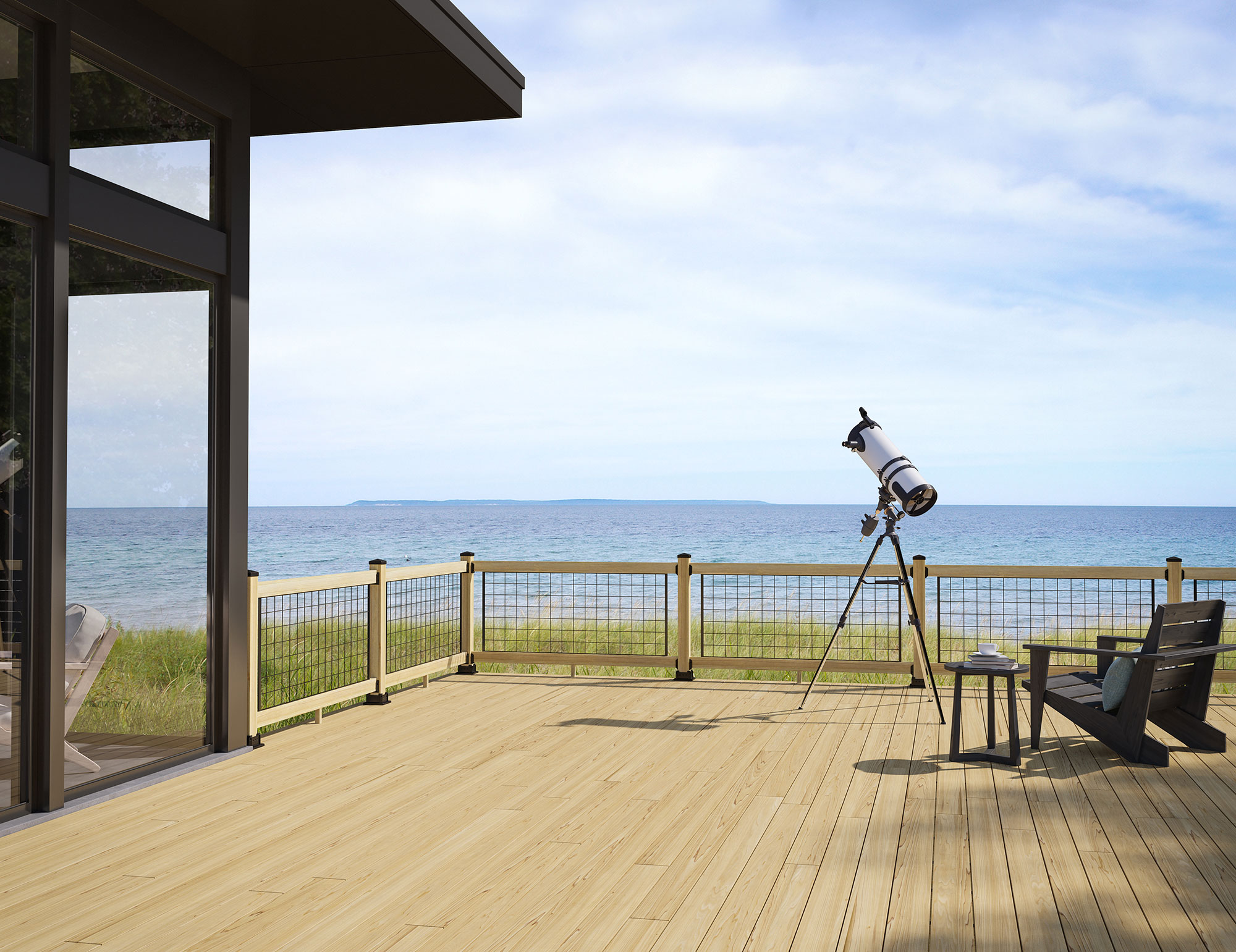
Photo courtesy ProWood
Despite challenges to homeownership, home remains the base where everything begins. Having a home means comfort, safety, and stability, according to Habitat for Humanity.
Success in uncertain times often involves providing a beacon amidst the chaos. Improved high-performance design and prudent material selection offer ways to inject security and confidence back into the design and building process. Providing homes with value-added features, like improved durability, indoor air quality (IAQ), and resilience resonates with anxious buyers, which results in more stable sales and reduced warranty and call-back issues for the builder. Resiliency issues have become increasingly prevalent in the building industry over the last decade.6
A majority—85%—of homeowners support the adoption of the latest building codes by their communities to ensure new construction meets stringent disaster-resilient standards. Additionally, 75% of homeowners are willing to upgrade certain home materials to meet building code standards, enhancing their properties’ resilience.7 Changes to regulations, codes, and consumer demands to ensure homes are prepared to better withstand weather extremes and other natural disasters can offer opportunities for both builders and home buyers.
Capturing Benefits and Expanding Horizons with Glass
For many buyers (39%), accepting a smaller lot is the path to affording a home. Another 35% will accept a smaller house if that equation makes ownership a reality. This trend is backed up by survey data: in 2003, the typical home buyer wanted 2,260 square feet of finished area. In 2023, that number was down to 2,067 square feet.8
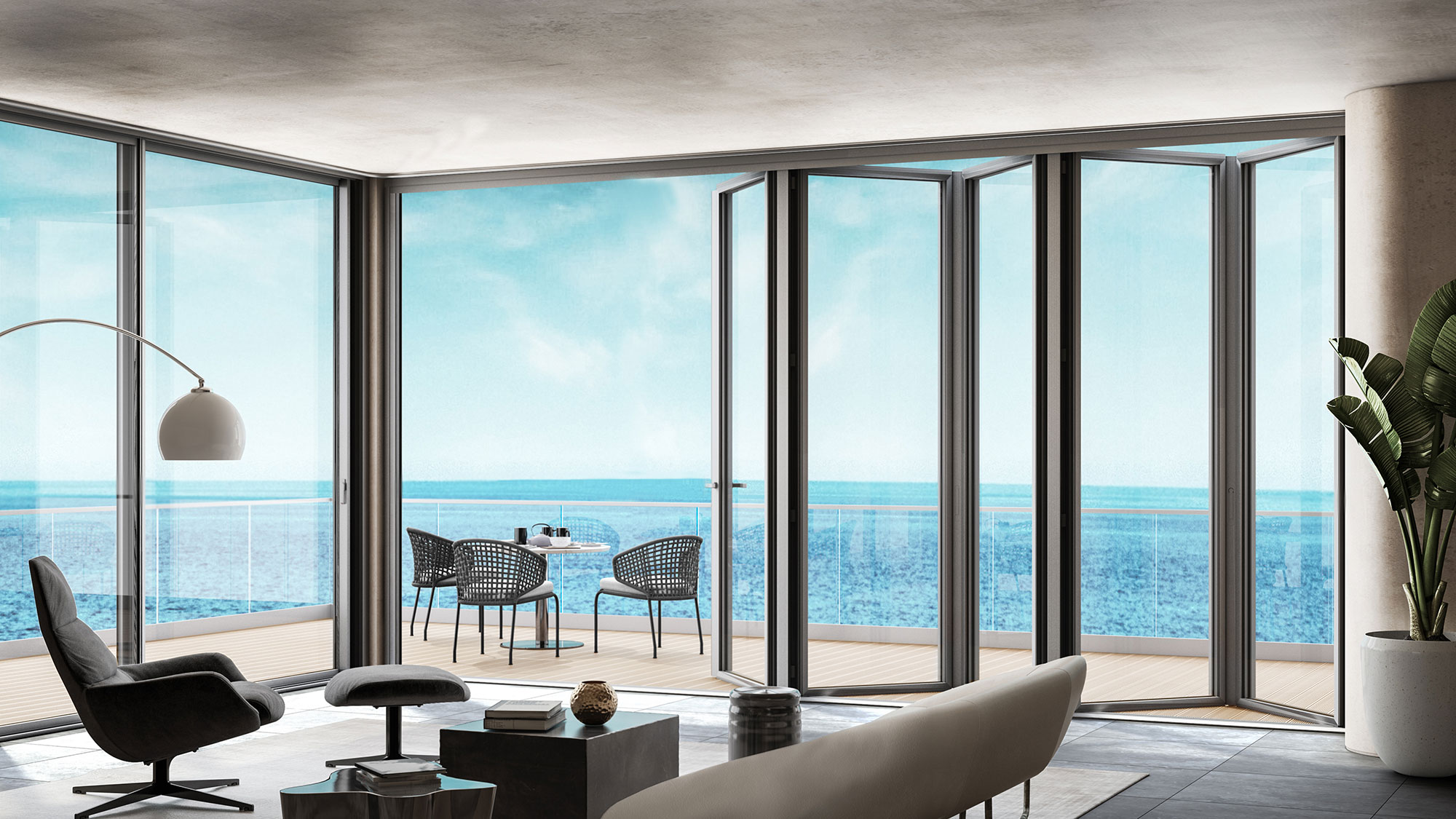
Photo courtesy CRL
Large expanses of glass are a hallmark in today’s designs. Movable glass walls capture daylight, maximize views, and expand the boundaries of any space.
To offset the reduction in overall home size, however, an open floor plan and ENERGY STAR windows9 and doors are top priorities for buyers. The increased glass, which provides connection outside and blurs the limitations of a home’s footprint, is important for buyers, who may be examining both the immediate asking price and the long-term costs of ownership.
Architects are responding to this demand for openness by designing newer homes with large-scale, movable glass walls. New innovations in movable wall installations allow for a sophisticated design that makes a visual statement, using remarkable simplicity. These installations create expansive outdoor views, improve daylighting, and offer minimal framing for aesthetic appeal. Often synonymous with contemporary homes, movable glass panel doors or wall systems offer exceptional perceived value for buyers. Leading door and glass manufacturers create sliding door and bi-folding door series that produce innovative solutions to enhancing sustainability, energy efficiency, and occupant welfare in contemporary single-family housing.
Because of their minimal frames, these door systems allow for ample daylight to enter the interior space, so that the use of artificial lighting is reduced, lowering energy consumption. Slim, minimal frames maximize views and, when opened, provide seamless transitions to the exterior. These benefits combine to improve the health and welfare of occupants. To architects, movable glass walls offer the added benefit of high thermal performance to help insulate homes during all seasons, which can reduce energy consumption. Additionally, these systems improve indoor air quality through natural ventilation, are low maintenance, can reduce costs, bolster energy efficiency, and promote occupant health by facilitating greater access to natural light. Because of their thermal properties like thermally broken framing, many of these movable walls can reduce wear and tear of air conditioning systems via less use.
Modern sliding doors and bi-folding doors represent two innovative solutions for design professionals. These systems enhance sustainability, energy efficiency, and occupant welfare. Certain units are demountable, which allows for the recycling of aluminum extrusions, besides incorporating recycled glass. Movable glass walls can feature distinctly slim frames and panels that impart the expansive views that occupants look for. At the same time, they offer exceptional thermal performance using thermally broken frames and 1-inch insulating glass units that together can produce U-factors as low as 0.36.
“By placing high-performance design first and selecting durable and visually appealing fenestration systems such as movable walls, we can help ensure today's homes will exceed expectations for years to come,” says Mark Suehiro, technical director of architectural hardware at CRL.
Forging a Durable Connection to the Outside
The importance of connecting outside and inside is a pervasive trend that has permeated the residential market. For 2024, a patio ranks as one of the two “most wanted” features in a home, according to NAHB’s latest study on buyer preferences.10 Buyers in the study were given a list of more than two hundred features of the home and the community and asked to rate each one on a consistent scale—essential, desirable, indifferent, do not want—in order to produce comparable results. In addition to a patio, rated as “Essential” by 86% of buyers, three additional outdoor features rounded out the list: exterior lighting (82%), a front porch (81%), and landscaping (80%).11
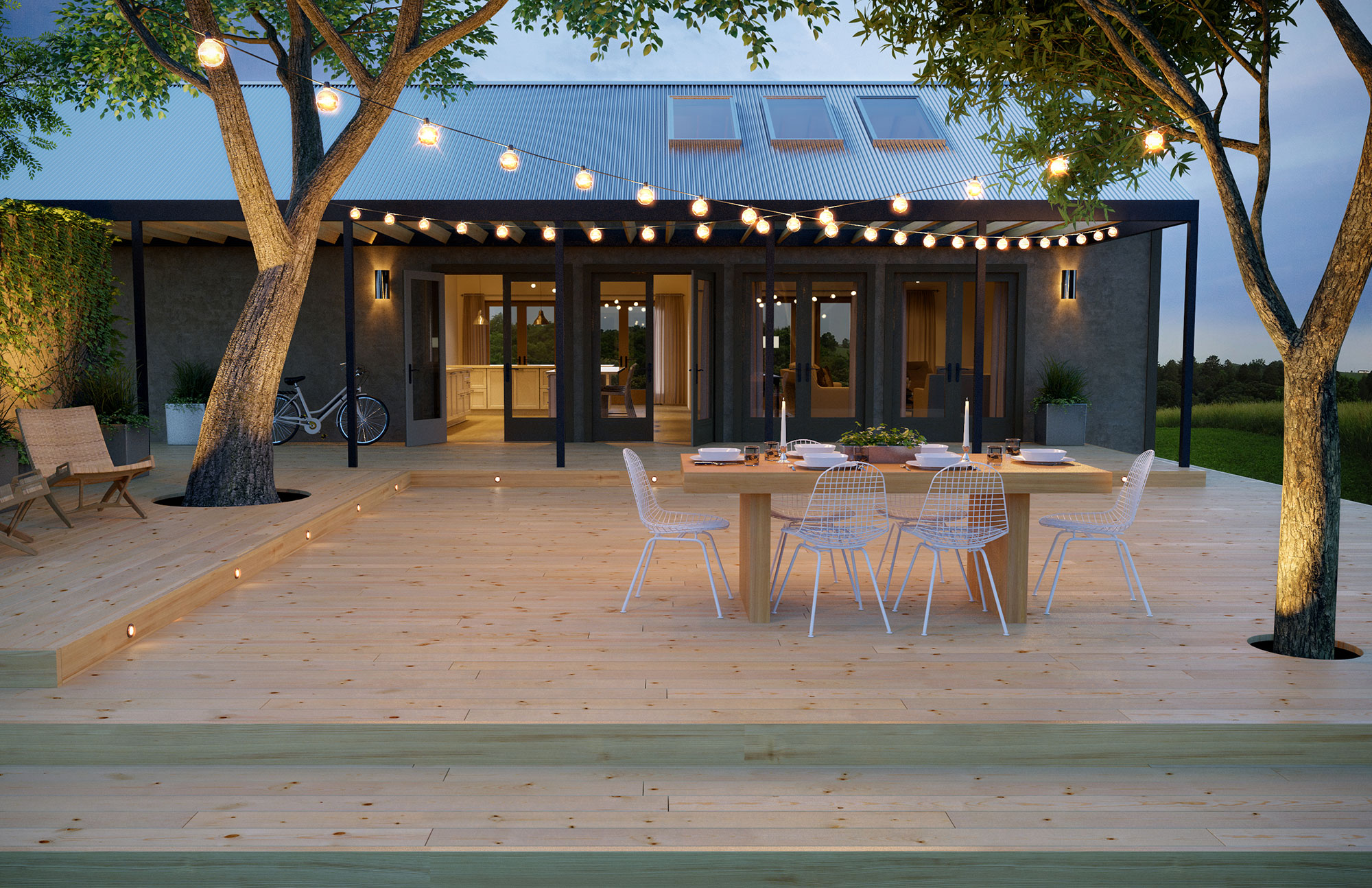
Photo courtesy ProWood
Outdoor living has been propelled to the top of homeowner wish lists reports NAHBand, subsequently, has become a top priority for architects and design professionals focused on residential design.
Spending more time outside not only maximizes space but it is also viewed by owners as critical to health. When asked which home features are important to personal wellness, potential homebuyers identified outdoor space (67%), conserving energy (65%), conserving water (54%), and eliminating chemicals (54%) as prioritized opportunities to connect sustainable features with greater well-being.12 The deck has quickly become the new family room and acts as additional living space. A cost-efficient alternative to a full home addition, it’s an easy way to add square footage for cooking, dining, and entertaining in the sun or under the stars.
Manufacturers are providing new tools that maximize the outdoor environs. Color-treated lumber technology gives architects a higher-quality finish for projects where treated wood could be a viable option. Color-treated wood uses a durable pressure treatment with added infused color, where an in-solution colorant penetrates the wood deeply beyond the surface, leaving the natural wood grain visible. The resulting finish requires very minimal maintenance and yearly touch-ups, as opposed to standard lumber. Color-treated lumber comes in several finishes. Depending on the manufacturer, finish warranties for color assurance are available.
Homeowners are increasingly diligent about reducing chemical exposure. Color-treated lumber uses a U.S. Environmental Protection Agency (EPA)-registered waterborne wood preservative system, with the help of an environmentally preferred Micronized Copper Azole (MCA) solution, to protect against termite attack and fungal decay. The finished lumber is building-code-approved for decking, aluminum building materials, and general above-ground and ground contact applications. Additionally, the material is certified for points toward the NGBS Green Certification and the ICC-700 National Green Building Standard.
Using color-treated lumber in lieu of standard pressure-treated lumber removes the burden of annually staining decks, railing, fences, or pergolas. Color-treated wood is compatible with aluminum building materials, meaning it’s less corrosive to fasteners. The treatment also prevents termite attacks and fungal decay. Saving time and maintenance and enhancing every inch of a homeowner’s investment creates a win-win for builders and occupants.
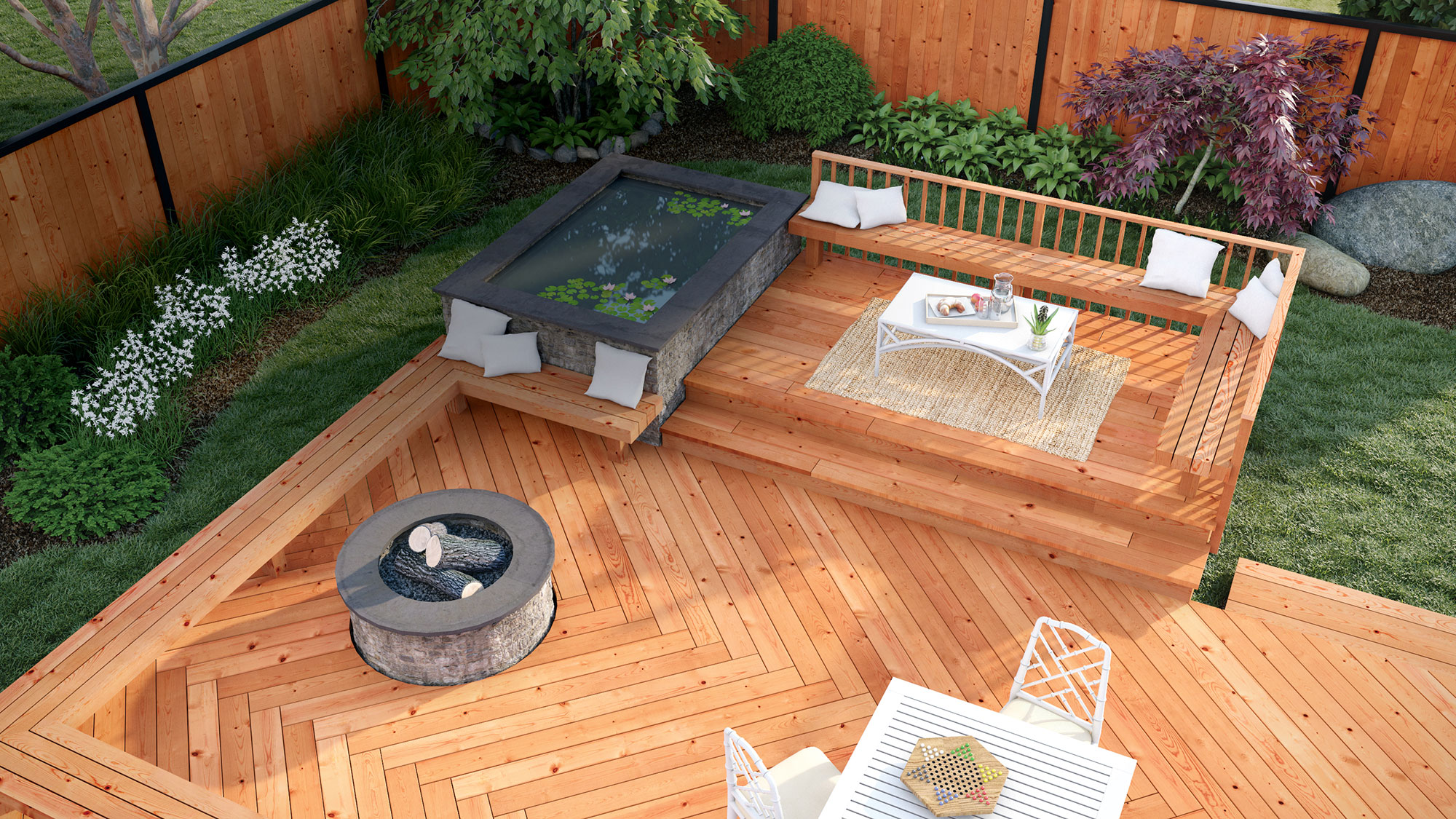
Photo courtesy ProWood
Color-treated lumber can enhance the resilience and durability of a home. Using certifications that validate the quality and performance of treated lumber, such as the American Wood Protection Association Standard, provides the design team and buyer with assurance.

Photo courtesy CRL
Fashioning homes with high-performance materials provides the high-value proposition needed to engage today’s buyer.
A Port in the Storm
It is no secret that the construction market is currently an uncertain place to be for the design professional, residential builder, and prospective homebuyer alike. The National Association of Home Builders (NAHB) /Wells Fargo Housing Market Index (HMI) was designed to provide a measure of health for the single-family housing market. In June 2024, builder confidence in the market for new single-family homes was 43 out of a possible 100, down two points from the May 20241 survey.
Likewise in June, the Fannie Mae Home Purchase Sentiment Index (HPSI) indicated that only nineteen percent of consumers felt that now is a good time to buy a home, up from 14% in May, which represented a new survey low.2 According to recent surveys conducted by NAHB and the U.S. Census Bureau, there is also a distinct discrepancy between the prices of homes being built, and the prices home buyers expect to pay. While 38% of buyers expect to pay less than $250,000 for their next home, only 5% of homes that started construction in 2023 are priced under $250,000.3
Nevertheless, the desirability of new homes continues to grow. Faced with the alternative of choosing between an existing home and a newly built home, 61% of home buyers surveyed in “What Home Buyers Really Want, 2024 Edition,” by NAHB, signified that a new home is their first preference. That marks the highest share of buyers leaning toward a new home since 2007 when 63% of buyers preferred new construction.4 To compare, in 2018, 54% of buyers preferred a new home. A single-family detached home remains the first purchase option for two of every three buyers (66%) surveyed. Far smaller numbers are looking to buy a townhome (16%), a multifamily home (10%), or a manufactured home (5%).5

Photo courtesy ProWood
Despite challenges to homeownership, home remains the base where everything begins. Having a home means comfort, safety, and stability, according to Habitat for Humanity.
Success in uncertain times often involves providing a beacon amidst the chaos. Improved high-performance design and prudent material selection offer ways to inject security and confidence back into the design and building process. Providing homes with value-added features, like improved durability, indoor air quality (IAQ), and resilience resonates with anxious buyers, which results in more stable sales and reduced warranty and call-back issues for the builder. Resiliency issues have become increasingly prevalent in the building industry over the last decade.6
A majority—85%—of homeowners support the adoption of the latest building codes by their communities to ensure new construction meets stringent disaster-resilient standards. Additionally, 75% of homeowners are willing to upgrade certain home materials to meet building code standards, enhancing their properties’ resilience.7 Changes to regulations, codes, and consumer demands to ensure homes are prepared to better withstand weather extremes and other natural disasters can offer opportunities for both builders and home buyers.
Capturing Benefits and Expanding Horizons with Glass
For many buyers (39%), accepting a smaller lot is the path to affording a home. Another 35% will accept a smaller house if that equation makes ownership a reality. This trend is backed up by survey data: in 2003, the typical home buyer wanted 2,260 square feet of finished area. In 2023, that number was down to 2,067 square feet.8

Photo courtesy CRL
Large expanses of glass are a hallmark in today’s designs. Movable glass walls capture daylight, maximize views, and expand the boundaries of any space.
To offset the reduction in overall home size, however, an open floor plan and ENERGY STAR windows9 and doors are top priorities for buyers. The increased glass, which provides connection outside and blurs the limitations of a home’s footprint, is important for buyers, who may be examining both the immediate asking price and the long-term costs of ownership.
Architects are responding to this demand for openness by designing newer homes with large-scale, movable glass walls. New innovations in movable wall installations allow for a sophisticated design that makes a visual statement, using remarkable simplicity. These installations create expansive outdoor views, improve daylighting, and offer minimal framing for aesthetic appeal. Often synonymous with contemporary homes, movable glass panel doors or wall systems offer exceptional perceived value for buyers. Leading door and glass manufacturers create sliding door and bi-folding door series that produce innovative solutions to enhancing sustainability, energy efficiency, and occupant welfare in contemporary single-family housing.
Because of their minimal frames, these door systems allow for ample daylight to enter the interior space, so that the use of artificial lighting is reduced, lowering energy consumption. Slim, minimal frames maximize views and, when opened, provide seamless transitions to the exterior. These benefits combine to improve the health and welfare of occupants. To architects, movable glass walls offer the added benefit of high thermal performance to help insulate homes during all seasons, which can reduce energy consumption. Additionally, these systems improve indoor air quality through natural ventilation, are low maintenance, can reduce costs, bolster energy efficiency, and promote occupant health by facilitating greater access to natural light. Because of their thermal properties like thermally broken framing, many of these movable walls can reduce wear and tear of air conditioning systems via less use.
Modern sliding doors and bi-folding doors represent two innovative solutions for design professionals. These systems enhance sustainability, energy efficiency, and occupant welfare. Certain units are demountable, which allows for the recycling of aluminum extrusions, besides incorporating recycled glass. Movable glass walls can feature distinctly slim frames and panels that impart the expansive views that occupants look for. At the same time, they offer exceptional thermal performance using thermally broken frames and 1-inch insulating glass units that together can produce U-factors as low as 0.36.
“By placing high-performance design first and selecting durable and visually appealing fenestration systems such as movable walls, we can help ensure today's homes will exceed expectations for years to come,” says Mark Suehiro, technical director of architectural hardware at CRL.
Forging a Durable Connection to the Outside
The importance of connecting outside and inside is a pervasive trend that has permeated the residential market. For 2024, a patio ranks as one of the two “most wanted” features in a home, according to NAHB’s latest study on buyer preferences.10 Buyers in the study were given a list of more than two hundred features of the home and the community and asked to rate each one on a consistent scale—essential, desirable, indifferent, do not want—in order to produce comparable results. In addition to a patio, rated as “Essential” by 86% of buyers, three additional outdoor features rounded out the list: exterior lighting (82%), a front porch (81%), and landscaping (80%).11

Photo courtesy ProWood
Outdoor living has been propelled to the top of homeowner wish lists reports NAHBand, subsequently, has become a top priority for architects and design professionals focused on residential design.
Spending more time outside not only maximizes space but it is also viewed by owners as critical to health. When asked which home features are important to personal wellness, potential homebuyers identified outdoor space (67%), conserving energy (65%), conserving water (54%), and eliminating chemicals (54%) as prioritized opportunities to connect sustainable features with greater well-being.12 The deck has quickly become the new family room and acts as additional living space. A cost-efficient alternative to a full home addition, it’s an easy way to add square footage for cooking, dining, and entertaining in the sun or under the stars.
Manufacturers are providing new tools that maximize the outdoor environs. Color-treated lumber technology gives architects a higher-quality finish for projects where treated wood could be a viable option. Color-treated wood uses a durable pressure treatment with added infused color, where an in-solution colorant penetrates the wood deeply beyond the surface, leaving the natural wood grain visible. The resulting finish requires very minimal maintenance and yearly touch-ups, as opposed to standard lumber. Color-treated lumber comes in several finishes. Depending on the manufacturer, finish warranties for color assurance are available.
Homeowners are increasingly diligent about reducing chemical exposure. Color-treated lumber uses a U.S. Environmental Protection Agency (EPA)-registered waterborne wood preservative system, with the help of an environmentally preferred Micronized Copper Azole (MCA) solution, to protect against termite attack and fungal decay. The finished lumber is building-code-approved for decking, aluminum building materials, and general above-ground and ground contact applications. Additionally, the material is certified for points toward the NGBS Green Certification and the ICC-700 National Green Building Standard.
Using color-treated lumber in lieu of standard pressure-treated lumber removes the burden of annually staining decks, railing, fences, or pergolas. Color-treated wood is compatible with aluminum building materials, meaning it’s less corrosive to fasteners. The treatment also prevents termite attacks and fungal decay. Saving time and maintenance and enhancing every inch of a homeowner’s investment creates a win-win for builders and occupants.

Photo courtesy ProWood
Color-treated lumber can enhance the resilience and durability of a home. Using certifications that validate the quality and performance of treated lumber, such as the American Wood Protection Association Standard, provides the design team and buyer with assurance.
Bringing the Value of Resilience to the Table
“In the ever-changing industry of home building, it is important to continually assess building needs and market trends. Resiliency issues, for example, have become increasingly prevalent in the building industry over the last decade,” said James W. Tobin, III, President and Chief Executive Officer, NAHB. “Changes to regulations, codes, and consumer demands to ensure homes are prepared to better withstand storms, droughts, and other natural disasters have created both uncertainty and opportunity for builders and home buyers.”13
Today’s homes are called to go beyond lessening their environmental impact; they also need to actively mitigate the effects of the environment. The most common natural hazards can be broken into five categories: wind, flood, fire, earthquake, and temperature. Any home may face damage from environmental hazards, prompting builders to implement resiliency practices to reduce such risks. Three-quarters of builders surveyed by the NAHB say they mitigate for at least one of these five hazards.14
Just as builders are actively embracing resilience, homeowners are growing increasingly aware of its value. In a survey conducted on behalf of the American Property Casualty Insurance Association (APCIA), 85% of homeowners supported the adoption of the latest building codes by their communities to ensure new construction meets stringent disaster-resilient standards. Seventy-five percent of homeowners were willing to upgrade certain home materials to meet building code standards, enhancing their properties' resilience. And a majority, 80%, of homeowners supported efforts to restrict development in storm/wildfire-prone areas to curb rebuilding and repair costs.15
Specifying Outdoor Features with Assurance
Patios, decks, pergolas, and gazebos are features highly valued by a prospective buyer and homeowner. Specifications allow the design team and builder to protect that investment from the elements with assurance.
The American Wood Protection Association (AWPA) is a non-profit organization that promulgates voluntary wood preservation standards. AWPA Standards are developed by its technical committees in an ANSI-accredited consensus-based process that involves individuals from all facets of wood preservation: producers of preservatives and preservative components; producers of treated and untreated wood products; end users of treated wood; engineers, architects, and building code officials; government entities, academia, and other groups with a general interest in wood preservation. AWPA's Standards are universally specified for wood preservation in the USA and are recognized worldwide.16
Professionals required to develop and maintain project specifications depend on AWPA Standards and its Technical Committees' expertise in the field of wood protection. Products specified in AWPA have been researched, evaluated through an ANSI-accredited process, and peer-reviewed by the largest body of wood preservation and protection experts in North America. Specifiers face a rapidly increasing diversity of preservatives and species in the marketplace, making it important to specify products that meet AWPA Standards.17
Once materials are delivered to the jobsite, the design team and builder can easily verify that they comply with AWPA Standards. Products that are compliant with AWPA standards feature a legible tag that states their status as an AWPA-standardized product. To determine conformance with AWPA Standards, the end tag will contain the following elements:
- AWPA Use Category: Examples are UC2, UC3B, or UC4A which describe the proper application for the treated wood product. The formal descriptions of the AWPA Use Categories can be found at https://awpa.com/images/standards/U1excerpt.pdf.
- Preservative Name and/or Code: Examples are Copper Azole (CA-C), Inorganic Boron (SBX), Micronized Copper Azole (MCA), among many others.
- Preservative Retention: The nominal amount of preservative retained in the wood as specified in Standard U1, such as 0.060, 0.15, or 0.31, which varies by the type of preservative used.
- Inspection Agency Logo: If the treating plant subscribes to third-party quality control, the logo of the accredited agency is displayed, along with a "check-mark" logo to make it easier to locate the agency information.
- Manufacturer and Location: This information facilitates additional communication, in case a consumer information sheet or additional information on the product itself is required.
Selecting Pressure-Treated Lumber
Selecting the right pressure-treated lumber product for the project is also critical. Use Category Designations can help clarify decision-making.
End tags for lumber that meets AWPA standards will display one of these Use Category Designations.
- UC3B: Above ground
- UC4A: General above-ground/ground contact and freshwater use
- UC4B: Ground Contact/structural use, for critical structural, ground contact, fresh water, and saltwater splash
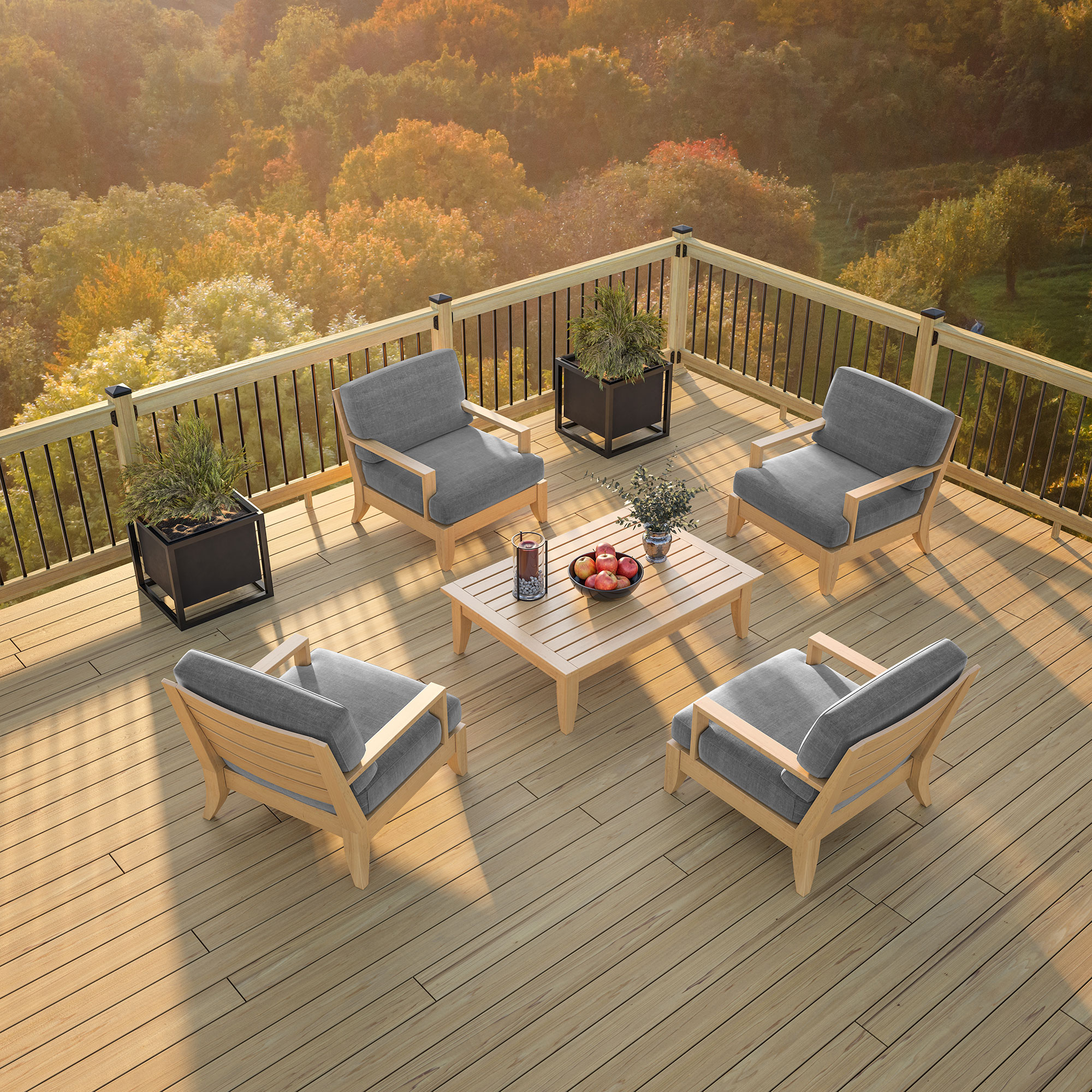
Photo courtesy ProWood
Advances in pressure-treated lumber products mean preservatives are EPA-registered and safe for handling and use. Color-treated lumber is guaranteed to resist fading, reducing future maintenance.
Light duty covers wood treated to an internal company standard. It is not meant for structural uses, and should not be used for applications that are critical to the integrity of a structure. Light Duty products also do not conform to the AWPA/ESR standards. These products are easily replaced and maintained and are generally backed by a 1-year warranty, though some products may carry a warranty of 10 to 20 years.
Lumber with a Light Duty designation can be used above-ground and in some ground contact settings. These products can comprise West Virginia split rail fencing, any RP/DF/non-KD SYP fencing products/components, and any specialties, such as spindles or lattice, and round posts. For long-term structures that are difficult to replace, it's recommended to use ground contact products. It is best to use above-ground products (UC3B) only for areas that will not devolve to ground contact over time. For decorative landscape projects that are easier to replace, the use of light-duty products is acceptable.
Wood treated to (UC4A) ground contact standards is ideal for general-use situations where the wood may contact moisture, the ground, or be installed in a manner that subjects the wood to comparable ground contact conditions. These conditions may include factors like poor ventilation, tropical climates, or frequent exposure to moisture.
Examples of UC4A-approved applications include:
- Deck joists
- Beams
- Ledger boards
- Posts
- Stair stringers
- Certain deck board installations
Ground contact lumber applications must adhere to UC4A requirements when wood is used in the following scenarios:
- The application is difficult to maintain, repair, or replace (such as deck joists and ledger boards) and is critical to the performance and safety of the entire system/construction.
- The application is installed less than 6 inches from the ground.
- The application is at risk for poor air circulation (little airflow).
- The application is likely to have prolonged contact with vegetation or damp leaves.
- The application is exposed to frequent moisture.
- The application is used in a tropical climate.
If a project requires above-ground products, it is important to think through natural conditions. Areas where debris can accumulate over months or years can simulate ground contact conditions. Factoring this into the design of the project and selection of material on the front end can pay dividends over the life of the project.

Photo courtesy CRL
Movable glass systems with a CW40 Performance Grade rating identify doors well-suited for challenging applications where high loads, limits on deflection, and heavy use are expected.
Other common debris culprits include mulch used around fences or decks, or vegetation that is allowed to grow up around the treated wood. These sources can quickly turn an above-ground exposure into one that presents the same challenges to wood as direct ground contact.
Providing good ventilation is also very important in the design of a treated wood structure. Decay fungi tend to thrive in dark, damp areas. This is especially important when decks are built within two feet of the ground or are elevated and include an under-deck ceiling. Again, factoring these site conditions in on the front end of the design is important to ensure the long-term life of the project.
Wood treated to (UC4B) heavy-duty standards should be used in very severe environments or for critical structural components such as foundation piling. It is crucial to always consult local building codes for additional requirements for specific structures. These requirements should be considered when the wood will be used to support a permanent structure.
Examples of UC4B applications include:
- Heavy-duty projects or functions.
- Wood that is difficult to replace or maintain.
- Treated wood that supports a permanent structure.
- Wood that has exposure to saltwater spray.
- Wood projects in extreme and tropical climates.
- Wood used for supporting a dock, pier, or marine structure; not in salt water but above it.
Bringing Strength to a Project with Doors
Doors, especially movable glass panel systems, may seem an unlikely candidate to bolster a home’s resilience. However, unlike standard sliding door systems, manufacturers today can provide sliding and bi-folding systems with a distinguishing NAFS CW Performance Class rating, making the systems well-suited for exterior applications where high loads, limits on deflection, and heavy use are expected. Compared to similar bi-folding or sliding doors in the market, these products also offer superior thermal and structural performance using thermally broken framing and 1-inch insulating glass. Here again, securing a resilient product can be achieved by knowing standards and requiring a performance specification.
The most widely recognized and relevant standard for fenestration is the North American Fenestration Standard (NAFS) which governs windows, doors, and skylights. Known as AAMA/WDMA/CSA 101/I.S.2/A440, this standard is familiar to many specifiers and includes four Performance Class categories. Classification of window and door products under the NAFS is based on independent testing that evaluates the design pressure of wind forces acting on the fenestration (measured in pounds per square foot/psf) at a stated pressure difference (measured in pascals Pa). It is helpful to think of Performance Class as a classification system that evaluates products based on a progressively greater ability to resist wind pressure, and water penetration, and for certain operable products, greater resistance to wear and abuse. For these reasons, Performance Class can be viewed as a classification that ranks products on the basis of durability.18
The criteria for tested fenestration units in each of the Performance Classes are as follows:
- R: commonly used in one- and two-family dwellings
- LC: commonly used in low-rise and mid-rise multifamily dwellings and other buildings where larger sizes and higher loading requirements are expected.
- CW: commonly used in low-rise and mid-rise buildings where larger sizes, higher loading requirements, limits on deflection, and heavy use are expected.
- AW: commonly used in high-rise and mid-rise buildings to meet increased loading requirements and limits on deflection, and in buildings where frequent and extreme use of the fenestration products is expected.
Critically for the case of large format glass doors that may face wind and environmental hazards, CW class units are now available from select manufacturers. Bi-folding and multi-slide movable glass panel systems with a CW certification have been independently tested and shown to meet the criteria to qualify for this preferred class of fenestration. This helps design professionals when selecting and specifying such products, but ultimately it means it benefits the owners and occupants of single- and multi-family housing. The ratings reflect performance features that help achieve the goal of reducing energy use while still meeting design intents. When specified correctly, these systems can enhance the building’s visual appeal, durability, and sustainability.
Meeting Unique Weather Challenges: Florida Product Approved
Protecting structures from extreme events and hazards begins with the exterior envelope. In addition to CW performance classes, the resilience offered by movable glass panel systems can go even further, including defending homes from adverse weather conditions found in Florida and other coastal regions.
Florida state law requires certain building envelope components and systems to have either a statewide or local product approval to demonstrate resistance to structural wind loads, defined by the Florida Building Codes, as a prerequisite for building permit approval. By Florida state law, building envelope components such as roofing, shutters, doors, and windows are required to have a Florida Product Approval. This approval provides evidence that the product is suitable for use in the state of Florida based on standards set in the current Florida Building Codes. The “Approved for use in the HVHZ” or High-Velocity Hurricane Zone (HVHZ) demonstrates statewide approval, as long as specific limitations of use are provided, which limit the approved product's use to rated structural loads. A Miami-Dade Notice of Acceptance (NOA) is the local product approval that demonstrates product satisfaction of the code criteria in the High-Velocity Hurricane Zone (HVHZ) as defined by the Florida Building Codes (FBC). The evaluation protocols for the NOA and HVHZ are the same.
Approved products can be found on the Building Code Information System (BCIS) at www.floridabuilding.org/pr/pr_app_srch.aspx.
Unseen Resilience: Protecting the Acoustical Environment
Although invisible, the effects of noise pollution have come under enhanced scrutiny within the past decade. Numerous studies demonstrate the significant impact of sound on people's performance, especially when it comes to mental and physical health.19 Mental stress and psychological problems are linked to noisy environments, and excessive noise can make people more irritable and nervous.20 Loud noise, especially that from road or air traffic can greatly disturb people's sleep quality. Being exposed to noisy environments has also been linked to an increased risk of cardiovascular disease and metabolic disease. The result of research into human interactions with noise has resulted in noise itself being classified as an environmental pollutant.
For a home, mitigating noise plays an important role in promoting the health and productivity of those who occupy its space. Controlling how sound moves through a structure and the building’s acoustics provides protection from external noise, enhances comfort and privacy, and reduces sound transmission and vibration passing through building elements. ASTM E90, “Standard Test Method for Laboratory Measurement of Airborne Sound Transmission Loss of Building Partitions and Elements,” is the test method that covers the laboratory measurement of airborne sound transmission loss of interior and exterior building partitions and elements. Testable products and assemblies under ASTM E90 include windows, doors, interior and exterior wall constructions, floor-ceiling systems, roof assemblies, curtain wall and storefront systems, skylights, office screens, and many other types of products. The ASTM E1425 standard practice specifies standard test sizes for these systems. The data obtained from this test is used to calculate sound transmission class (STC) and outdoor-indoor transmission class (OITC) ratings in accordance with ASTM E413 and ASTM E1332 respectively. Manufacturers can provide both bi-fold and sliding glass panel systems that achieve an STC rating of 33 to 37. By using advanced products, architects and designers can create designs providing calm and private spaces, while maintaining a vibrant, open aesthetic.
Quantifying Benefits of Green
Almost half of homebuyers surveyed—46%—report that a home that minimizes its impact on the environment is important to their personal wellness.21 Terms like “high performance,” “quality construction,” and “operating efficiency” resonate with modern buyers.22 Selecting materials that are healthy and provide efficiency speaks to an increasingly educated residential audience. They also communicate value. These attributes create distinguishing marks in a turbulent market.
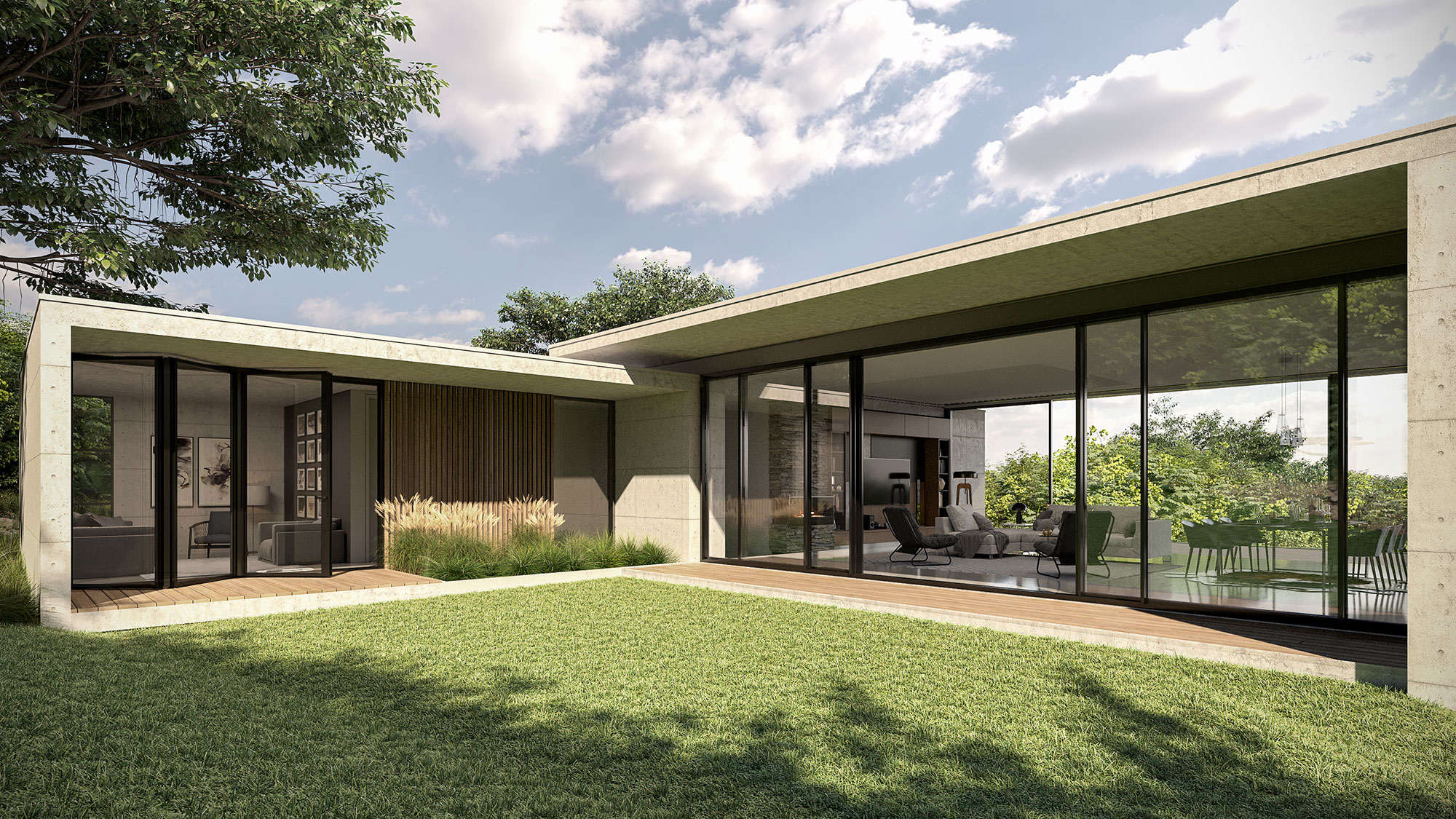
Photo courtesy CRL
ENERGY STAR reports that market studies consistently demonstrate the case for energy-efficient homes, with sale and re-sale price premiums.
Saving Energy and Bolstering Performance with Movable Glass Panel Door Systems
Windows, doors, skylights, and curtain walls, both residential and commercial, have their thermal transmittance assessed via NFRC 102–Procedure for Measuring the Steady-State Thermal Transmittance of Fenestration Systems. The thermal transmittance (U-Factor) of the product is determined by placing the product in a wall between warm and cold control rooms. Temperatures of 70ºF (21ºC) and 0ºF (-18ºC) and a wind speed of 15 mph (24 kph) are maintained in the two rooms until steady-state conditions have been met for temperature on both sides and the energy input to the warm side has been measured. The heat flow through the product is measured to determine the U-Factor of the product. The U-Factor can be used to determine energy losses through the system. This test is used in conjunction with the NFRC 100 simulation methods to prove the validity of the simulation results for the product.
Historically, while replacing large portions of the insulated building envelope with glass hurt overall efficiency, modern innovations in glazing and components mean leading sliding and bi-folding glass panel systems offer exceptional thermal performance. These modern systems use thermally broken frames and 1-inch insulating glass units which, together, can produce U-factors as low as 0.36. This effectively reduces dependency on air conditioning systems, improving the energy efficiency of single-family homes. To maintain a target of sustainable design, when architects specify demountable movable wall systems, whether sliding or bi-folding doors, specifying thermally enhanced units effectively mitigates heat transfer. Reducing heat transfer helps to keep interior temperatures cool during the summer and warm during the winter. This places less strain on HVAC systems throughout the year, which reduces energy consumption, and enhances comfort for occupants.
Movable glass panels also capture the twin benefits of daylighting and ventilation. Daylighting is the use of windows, doors, and skylights to bring sunlight into a home. Today's highly energy-efficient windows and doors can reduce the need for artificial lighting during daylight hours without causing heating or cooling problems. Not only does daylighting offset energy usage, it also aids occupant health. Relying on natural sunlight balances circadian rhythms and promotes better health and activity levels for those within the home. With documented research dating back to 1986, daylighting also has consistently been associated with improved mood, enhanced morale, less fatigue, and reduced eyestrain.23 Bright lighting enables enhanced focus and alertness, and well-daylit spaces are generally perceived by occupants to be “better" than dim, gloomy ones.24 Using glass allows people to enjoy distant, diverse, and dynamic views from the interior and establishes a link to the surrounding environment which fosters connection and creativity.25
A home’s climate and design dictate the best way to incorporate daylighting. The sizes and locations of door systems and windows should be based on the cardinal directions, rather than their effect on the street-side appearance of the house. According to the U.S. Department of Energy (DOE), south-facing windows typically allow most winter sunlight into the home, but little direct sun during the summer, especially when properly shaded. North-facing windows admit relatively even, natural light, producing little glare and almost no unwanted summer heat gain. East- and west-facing windows can provide good daylight penetration in the morning and evening, respectively, but may cause glare, can admit a lot of heat during the summer, and contribute little to solar heating during the winter.26
With an increased awareness of the cost and environmental impacts of energy use, natural ventilation has also become an increasingly attractive method for reducing energy use and cost and for providing acceptable indoor environmental quality. Large movable glass panel door systems are the star in any natural ventilation design. Natural ventilation, unlike fan-forced ventilation, uses the natural force of wind to deliver fresh air into buildings. Outdoor air is required in buildings to alleviate odors, provide fresh oxygen for respiration, and increase comfort.
For the homeowner, bringing in fresh air maintains a healthy, comfortable, and productive indoor climate rather than relying on forced ventilation from A/C systems. According to the Whole Building Design Guide, in favorable climates and building types, natural ventilation can be used as an alternative to air-conditioning, saving 10%–30% of total energy consumption.27 The amount of ventilation will depend critically on the size and placement of openings in the building, according to Andy Walker of the National Renewable Energy Laboratory.28 An open floor plan and openings between rooms such as transom windows, louvers, and grills, are techniques to complete the airflow circuit through a building.
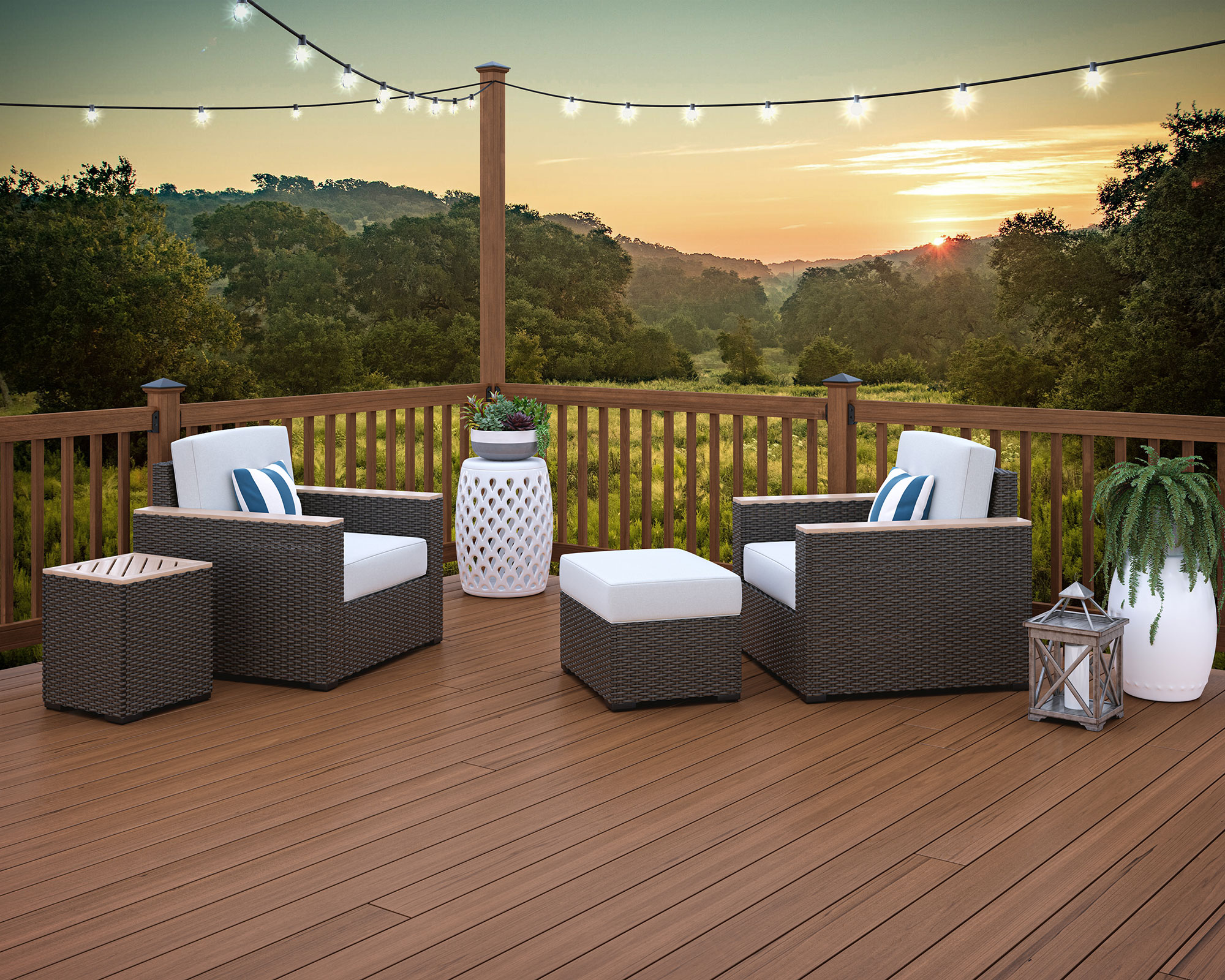
Photo courtesy ProWood
Color-treated lumber allows the unique, natural beauty of wood to remain visible while repelling fungal decay and termites.
Providing Material Safety and Hardiness
Not only are high-performance products increasingly important to the savvy homebuyer, but avoiding chemicals of concern is also a growing focus. Environmentally preferable products that can provide durability equal a win-win for the design team and prospective owner.
There are many different types of pressure-treated wood available in today’s retail lumber yards. Treated lumber is no longer confined to suspicious shades of green with murky chemical labels. Leading manufacturers offer color-treated lumber products using an innovative micronized copper solution. MCA, or Micronized Copper Azole, is an effective and reliable protectant against rot, fungal decay, and termites in above-ground and ground-contact applications. Developed over years from intensive research, the MCA formula is subjected to ongoing, rigorous testing in thousands of test stakes at industry-recognized field test site locations all over the world.
The finished product contains two active ingredients to stop decay and termite attack: copper and tebuconazole. Azoles are used in personal care products, such as foot creams and fungal ointments. Copper is a common metal used to build water pipes and electrical conduits, with which humans have contact every day. In MCA-treated wood, these two ingredients are applied in a mixture of water at a solution strength of less than 1% active ingredients (99% or more water). To produce the desired color during the process, the color is infused by driving pigment deep into the wood fibers.
While color-treated lumber is a new product within the market, its manufacturers stand behind the process. Horizontal applications boast a 2-year color assurance warranty; vertical applications feature a 5-year color assurance. Additionally, color-treated lumber with MCA has been independently verified as an eligible product for use in achieving points toward project certification under the ICC-700 National Green Building Standard.
The resultant treated product provides pressure-treated wood that is both an eco-friendly product and serviceable for decades. The EPA has registered the preservative process and deemed it appropriate for the protection of wood from rot and termites when used as directed. This simple formulation helps maintain the natural beauty of the wood while enhancing durability and maintenance. Color-treated lumber is also compatible with aluminum building materials, as it is less corrosive to fasteners.

Photo courtesy ProWood
New products are allowing residential construction projects to capture resilience and durability, a powerful value proposition for today’s homebuyer.
Partnering for Good
Ultimately, a simple sale is not the final goal. Success in a residential project also means reduced warranty issues and call-back issues for the builder. The relationship between the design team and the builder is a true partnership, as the designer must specify materials and features to complement the builder’s goals. Acting as an important bridge between builder and architect is the manufacturer. Leading manufacturers fill a valuable role by offering trusted support, customization, and documentation to help inform the architect and provide service to the builder.
Maximizing Lifespan, Minimizing Maintenance
Guidance from a manufacturer that reaches beyond installation is critical to maximize the life of any product. For example, to forestall the impacts of the sun’s ultraviolet (UV) rays and the wet-dry cycle on color treated lumber, following routine maintenance has the biggest impact for providing long-lasting performance.
Color treated products using MCA, offer real protection from the sun’s ultraviolet (UV) rays. UV exposure is less damaging to these products than to untreated wood. Also, products containing built-in water repellent are better able to handle exposure over the first year or two. However, the more protection provided to the product, the better the long-term appearance and performance of the wood project. Therefore, re-application of a good penetrating product every year or two, particularly in demanding applications, helps keep an outdoor structure looking good for many years. High-quality penetrating products that boast water repellency and UV protection, are recommended for maintenance and should be applied to dry wood. These may be brushed or sprayed on.
Innovations that Last
Architects, quick to embrace the beauty and benefits of multiple glass panel door systems in residential settings, found themselves initially limited by size, color, or profile options. However, the latest innovations in sliding and bi-folding multiple panel systems feature a sophisticated design that makes a visual statement on a large scale, capturing the most desirable features in aesthetics and performance. For sliding systems, ultra-slim 1-5/16-inch panel rails and stiles create a minimal and uniform frame that produces uninterrupted views, while letting daylight flow freely to enliven interiors.
With a maximum system height of 13 feet and panel width of 7 feet, sliding systems deliver expansive scale and elegance. Despite the large sliding panels, advances in hardware and components provide effortless operation. Panel loads are evenly distributed across the bottom rolling components resulting in a fluid, frictionless glide. A precision-engineered stainless-steel track further facilitates panel movement. Door automation is also available for hands-free operation.
Bi-folding door systems have also innovated and evolved. Distinctly slim 4-3/4-inch vertical posts and 1-7/16-inch rails reduce visible hardware and produce clean sightlines that maximize views. Panel hinges are completely concealed to deliver a minimal, streamlined look. Leading manufacturers offer superior thermal and structural performance using thermally broken framing and 1-inch insulating glass.
For sliding and bi-folding systems, those distinguished by a NAFS CW Performance Class rating are ideal for exterior applications where larger sizes, higher load requirements, limits on deflection, and heavy use are expected.
Leading manufacturers also stand behind the hardware of movable glass panel systems. Multipoint locking mechanisms, integrated stainless steel flat handles, track options, and testing of components to 40,000 cycles and beyond indicate a product that can be chosen with confidence. Color options are also expanding, with Matte Black, Bronze Anodized, Satin Anodized, Black Powder Coat, and White Powder Coat Glossed as standard.
Though the residential market faces challenges, new products are allowing home construction to capture resilience and durability. By placing high-performance design first, today's homes will exceed expectations and add value for years to come.
End Notes
1“NAHB/Wells Fargo Housing Market Index (HMI).” National Association of Home Builders®. June 19, 2024. https://www.nahb.org/news-and-economics/housing-economics/indices/housing-market-index. Accessed July 12, 2024.
2“National Housing Survey.” Fannie Mae®. July 8, 2024. https://www.fanniemae.com/research-and-insights/surveys-indices/national-housing-survey. Accessed July 12, 2024.
3Emrath, Paul. “Housing Affordability Challenges Leads to Frustrated Buyer Price Expectations.” Eye on Housing. National Association of Home Builders®. July 5, 2024. https://eyeonhousing.org/2024/07/housing-affordability-challenges-leads-to-frustrated-buyer-price-expectations/. Accessed July 12, 2024.
4Quint, Rose. “Preference for New Homes Keeps Rising.” Eye on Housing. National Association of Home Builders®. May 24, 2024. https://eyeonhousing.org/2024/05/preference-for-new-homes-keeps-rising/. Accessed July 12, 2024.
5Quint, Rose. “Buyer Preference for a Detached Home Remains Strong.” Eye on Housing. National Association of Home Builders®. April 22, 2024. https://eyeonhousing.org/2024/04/buyer-preference-for-a-detached-home-remains-strong/. Accessed July 12, 2024.
6Jones, Stephen A. and Donna Laquidara-Carr. “Building Sustainably: Green & Resilient Single-Family Homes 2024.” SmartMarket Brief. Dodge Construction Network. https://www.nahb.org/-/media/NAHB/advocacy/docs/industry-issues/sustainability/green-smartmarket-brief-2024.pdf?rev=1911eead2bcd4f309ef4b69c41f85071&hash=D0CE69C60CE8A31563278683C3E8BFAF. Accessed July 12, 2024.
7Araullo, Kenneth. “Majority of US homeowners face resiliency barriers as climate-driven events loom.” Insurance Business. October 10, 2023. https://www.insurancebusinessmag.com/us/news/property/majority-of-us-homeowners-face-resiliency-barriers-as-climatedriven-events-loom-462570.aspx. Accessed July 12, 2024.
8Quint, Rose. “Top Compromises Buyers Will Make to Reach Homeownership.” National Association of Home Builders®. May 13, 2024. https://eyeonhousing.org/2024/05/top-compromises-buyers-will-make-to-reach-homeownership/. Accessed July 16, 2024.
10Tracey, Melissa Dittmann. “13 Features New-Home Buyers Say Are Essential, Desirable.” National Association of Realtors®. March 1, 2024. https://www.nar.realtor/magazine/real-estate-news/sales-marketing/13-features-new-home-buyers-say-are-essential-desirable. Accessed July 16, 2024.
11Quint, Rose. “Outdoor Features & a Laundry Room Among Most Wanted Features. National Association of Home Builders®. April 3, 2024. https://eyeonhousing.org/2024/04/outdoor-features-a-laundry-room-among-most-wanted-features/. Accessed July 16, 2024.
12Ibid.
13“Study reveals American consumers crave sustainable home design, yet consumer action is limited.” America at Home Study. Kantar. April 24, 2023. https://www.kantar.com/north-america/company-news/study-reveals-american-consumers-crave-sustainable-home-design-yet-consumer-action-is-limited. Accessed July 16, 2024.
14Jones, Stephen A. and Donna Laquidara-Carr. “Building Sustainably: Green & Resilient Single-Family Homes 2024.” SmartMarket Brief. Dodge Construction Network. https://www.nahb.org/-/media/NAHB/advocacy/docs/industry-issues/sustainability/green-smartmarket-brief-2024.pdf?rev=1911eead2bcd4f309ef4b69c41f85071&hash=D0CE69C60CE8A31563278683C3E8BFAF. Accessed July 17, 2024.
15Dereski, Onnah. “Green Building: Resiliency Practices.” National Association of Realtors®. April 22, 2024. https://eyeonhousing.org/2024/04/green-building-resiliency-practices/. Accessed July 17, 2024.
16Araullo, Kenneth. “Majority of US homeowners face resiliency barriers as climate-driven events loom.” Insurance Business. October 10, 2023. https://www.insurancebusinessmag.com/us/news/property/majority-of-us-homeowners-face-resiliency-barriers-as-climatedriven-events-loom-462570.aspx. Accessed July 17, 2024.
17The American Wood Protection Association (AWPA). https://awpa.com.
18“How to Specify Treated Wood Products.” The American Wood Protection Association. https://awpa.com/images/public/How_to_Specify_Treated_Wood.pdf. Accessed July 17, 2024.
19Jaugelis, Al. “Performance Class – The Key Concept at the Heart of the NAFS.” RDH. November 18, 2014. https://www.rdh.com/blog/performance-class-the-key-concept-at-the-heart-of-nafs/#:~:text=For%20these%20reasons%2C%20I%20think,on%20the%20basis%20of%20durability. Accessed July 17, 2024.
20Chao Liu, Qiuyun Zang, Jiaxin Li, Xue Pan, Haoru Dai, Weijun Gao. “The effect of the acoustic environment of learning spaces on students' learning efficiency: A review.” Journal of Building Engineering, Volume 79, 2023, 107911, ISSN 2352-7102. https://doi.org/10.1016/j.jobe.2023.107911. (https://www.sciencedirect.com/science/article/pii/S2352710223020910) Accessed July 17, 2024.
21H.E. Laszlo, E.S. McRobie, S.A. Stansfeld, A.L. Hansell. “Annoyance and other reaction measures to changes in noise exposure — A review.” Science of The Total Environment, Volumes 435–436, 2012, Pages 551-562, ISSN 0048-9697. https://doi.org/10.1016/j.scitotenv.2012.06.112. (https://www.sciencedirect.com/science/article/pii/S0048969712009539). Accessed July 17, 2024.
22“Study reveals American consumers crave sustainable home design, yet consumer action is limited.” America at Home Study. Kantar. April 24, 2023. https://www.kantar.com/north-america/company-news/study-reveals-american-consumers-crave-sustainable-home-design-yet-consumer-action-is-limited. Accessed July 18, 2024.
23Dereski, Onnah. “Green Building: Resiliency Practices.” National Association of Realtors®. April 22, 2024. https://eyeonhousing.org/2024/04/green-building-resiliency-practices/. Accessed July 17, 2024.
24Robbins, C. L. (1986) Daylighting Design and Analysis, New York: Van Nostrand Reinhold Company.
25Mardaljevic, J. (2012) Daylight, Indoor Illumination and Human Behavior in Encyclopedia of Sustainability Science and Technology Springer-Verlag New York Inc, New York. ISBN 978-0-387-89469-0, pp 2804-2846.
26Wirz-Justice, A., Fournier, C. (2010) Light, Health and Wellbeing : Implications from chronobiology for architectural design, World Health Design, vol. 3.
27“Daylighting.” U.S. Department of Energy. https://www.energy.gov/energysaver/daylighting. Accessed July 18, 2024.
28Walker, Andy. “Natural ventilation.” National Renewable Energy Laboratory. Whole Building Design Guide. August 2, 2016. https://www.wbdg.org/resources/natural-ventilation. Accessed July 18, 2024.
29Ibid.











